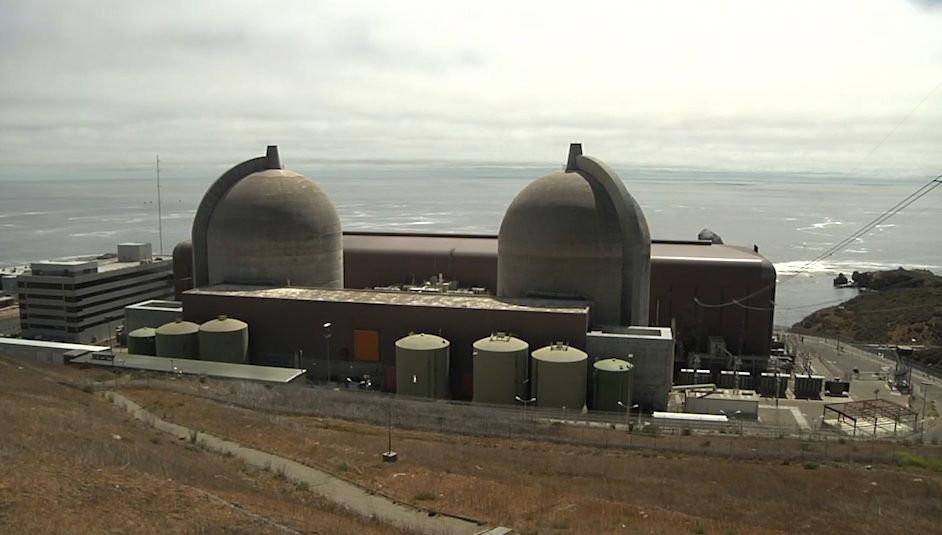California legislators advance plan to extend nuke plant run

By MICHAEL R. BLOOD and ADAM BEAM
Associated Press
SACRAMENTO, Calif. (AP) — The California Legislature on Wednesday approved Gov. Gavin Newsom’s blueprint to extend the lifespan of the state’s last operating nuclear power plant by up to five years, after he warned the state could face rolling blackouts if its twin reactors were retired too soon.
The Democratic governor has no direct authority over the operating license for the Diablo Canyon Power Plant, which sits on a bluff above the Pacific midway between Los Angeles and San Francisco. The vote opens the way for operator Pacific Gas & Electric to begin a two-pronged effort to seek a longer run for the plant beyond a scheduled closing by 2025, but uncertainties remain and it does not guarantee that will happen.
“I’m not a proponent of the Diablo Canyon power plant. But I am a proponent of keeping the lights on,” said Democratic Assemblymember Chris Holden in arguing for a bill in the midst of a triple-digit heat wave that was stressing the state’s power grid.
Without the plant, nine million Californians are at risk of having their power grid fail, warned Republican Assemblyman Jim Patterson in rare agreement with Newsom.
“If we don’t do this, we’re going to have to explain to our constituents why our foolish decisions have created circumstances in which they are compelled to live in a state in which they can’t use their air conditioner,” he said.
The utility needs to obtain permission from the U.S. Nuclear Regulatory Commission to continue making electricity beyond 2025, when its license expires, and PG&E also will seek a share of $6 billion the Biden administration has set aside to rescue nuclear plants at risk of closing.
If that federal money doesn’t come through — and some critics believe the plant will not qualify — the state could back out of the deal.
The outcome carried symbolic weight in the birthplace of the modern environmental movement. At issue was whether nuclear power would be embraced as part of a strategy to keep the lights on and rising temperatures in check, despite the highly radioactive waste it leaves behind with no permanent repository to store it. The debate also revived long-running questions about earthquake safety at the site.
The proposal easily passed the state Legislature, with more than two-thirds of the state Assembly and Senate voting just after midnight to send the bill to Newsom. Republican Sen. Brian Dahle, who is Newsom’s opponent in the November election, said he did not vote for the bill because it would raise rates for electricity customers.
“I’m not going to raise the rates on Californians across the board,” Dahle said. “I’m not going to bail the governor out.”
The vote was preceded by days of intense lobbying from environmentalists who wanted the plant closed on schedule, and industry-linked groups that supported Newsom’s recommendation for an extended lifespan.
On Wednesday, the governor’s office was calling wavering legislators, and union members who backed a longer run were reaching out to Senate and Assembly members at the Capitol.
Newsom first floated the idea of a longer lifespan for the reactors in April. His administration argued that Diablo Canyon’s power is essential to avoid shortages at a time when a warming climate is boosting power demand, wildfires sometimes incinerate power lines and a long-running drought has reduced hydropower. An emerging tariff dispute delayed solar and storage projects, administration officials said.
The plan included a $1.4 billion forgivable loan for PG&E.
Newsom has gained national attention for his push to expand clean energy, as the state aims to cut emissions by 40% below 1990 levels by 2030. California installed more clean energy capacity in 2021 than in any other year in state history, but administration officials say reliability remains in question as temperatures rise amid climate change.
But environmentalists said that a nuclear plant — generating large amounts of power continuously — is not a solution to fill occasional gaps in supplies, such as when solar power dips after the sun sets.
There was also concern about the aging plant’s safety.
Construction at Diablo Canyon began in the 1960s and critics say potential shaking from nearby earthquake faults not recognized when the design was first approved — one nearby fault was not discovered until 2008 — could damage equipment and release radiation.
Other issues ranged from how ratepayers across the state might be impacted, the risks that came with sidestepping environmental rules and the safe storage of spent nuclear fuel on the site.
A group of Democratic legislators had proposed a rival plan that would speed up development of renewable power and transmission lines, while leaving intact plans to shutter the plant by 2025.
The governor’s late-hour proposal represented an attempt to unspool a complex 2016 agreement among PG&E, environmentalists and plant worker unions to close the reactors by 2025, which Newsom supported at the time as lieutenant governor. The joint decision also was endorsed by California utility regulators, the Legislature and then-Democratic Gov. Jerry Brown.
Lawmakers have questioned why Newsom dropped the text of his legislation just days before the end of the Legislature’s two-year session, saying it provided virtually no time to carefully review it.
___
Blood reported from Los Angeles. Associated Press reporter Don Thompson contributed from Sacramento, Calif.
